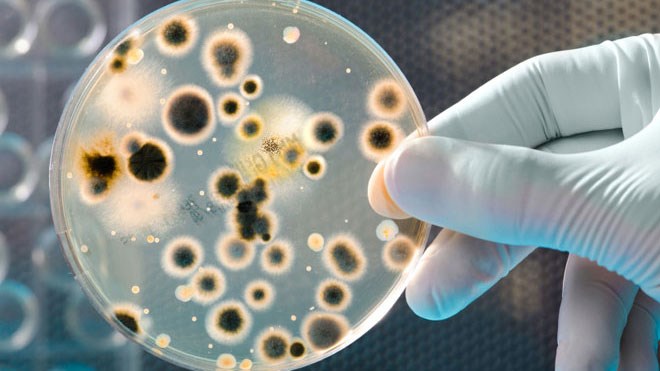We live on a planet covered by organisms too small to be seen by the naked eye.
Humanity has its own unique collection. Each of us is composed of about 30 trillion human cells and more than 100 trillion bacterial and fungal cells.
They grow quickly. While a human baby takes nine months to develop, a few bacteria placed in nourishing media will expand to 10 billion cells overnight.
They provide many essential services, including helping our immune system resist invading disease-causing organisms. (To learn about some of the unintended harmful effects of antibiotics on these trillions of organisms, and in turn on us, read “Missing Microbes” by Dr. Martin J. Blaser.)
Pathogens are the bacteria, fungi and viruses that make us ill. For the past 70 years, we have been able to wage war against them using an increasing number of antibiotics that have saved millions of lives.
George Washington died of a throat infection that blocked his airway. His treatment was bloodletting. Nobody had heard of antibiotics then, never mind bacteria.
People are aware now. In 2010, there were 1,365 prescriptions written in the U.S. for every 1,000 children under the age of two.
On average, people will take 30 courses of antibiotics by age 40. If antibiotics are so good, why not use them even when the likelihood of benefit is low, say treating a cold where the cause is often a virus that does not respond to antibiotics (which treat bacteria)? Isn't it a case of no risk with possible benefit?
Well, there are risks. The more often we take antibiotics, the higher the chance for creating resistant organisms.
While most bacteria are killed, the resistant ones multiply in the spaces left empty. The next time you need help, that antibiotic may no longer work.
Slowly, resistance is spreading. You may have heard of some of the resistant organisms with the curious short-form names: MRSA, VRE, ESBL, C. Difficile, CRE, TB. Some of these are resistant to almost every antibiotic.
Fortunately, the incidence of these resistant bacteria is relatively low in Sudbury.
Because of the increasing development of resistance, the useful lifespan of each antibiotic is getting shorter. Scientists used to compensate by developing new antibiotics, but this is now proving much more difficult.
Few new antibiotics have come along in recent years.
It may come as a surprise, but most antibiotics in North America do not go to humans — they go to farm animals for the purpose of fattening them up prior to slaughter. This has lead to antibiotic residues in our food and in turn, in us.
What is this residue doing to the growth of our children? What happens when we eat animals infected with resistant bacteria?
What can be done?
Our governments should begin a public-health campaign to reduce the use of antibiotics given to children for viral infections of the ears, throat and chest. The use of antibiotics in animals for the purpose of growth promotion should be banned.
Research into new antibiotics should be subsidized since drug companies are increasingly unwilling to do it.
Doctors need better tests to identify disease-causing organisms, ruling out the viruses that cannot be so treated. Results from these tests should be available in hours, not days.
What can you do?
Resist pushing your physician for a prescription for antibiotics — leave it to his or her judgment. And advocate for immediate government action.
Think of it as preparing for war against the invisible enemy in our midst.
Dr. Peter Zalan is president of the medical staff at Health Sciences North.
Join Sudbury.com+
- Messages
- Post a Listing
- Your Listings
- Your Profile
- Your Subscriptions
- Your Likes
- Your Business
- Support Local News
- Payment History
Sudbury.com+ members
Already a +member?
Not a +member?
Sign up for a Sudbury.com+ account for instant access to upcoming contests, local offers, auctions and so much more.
